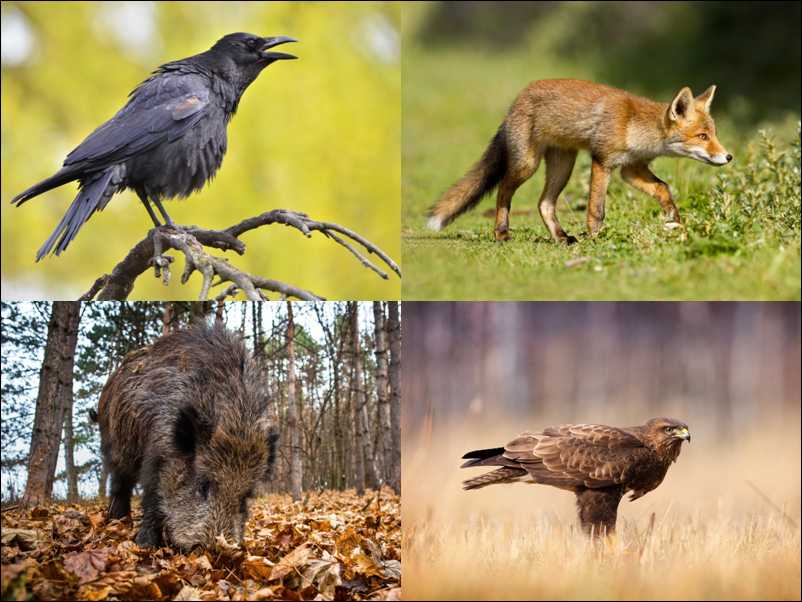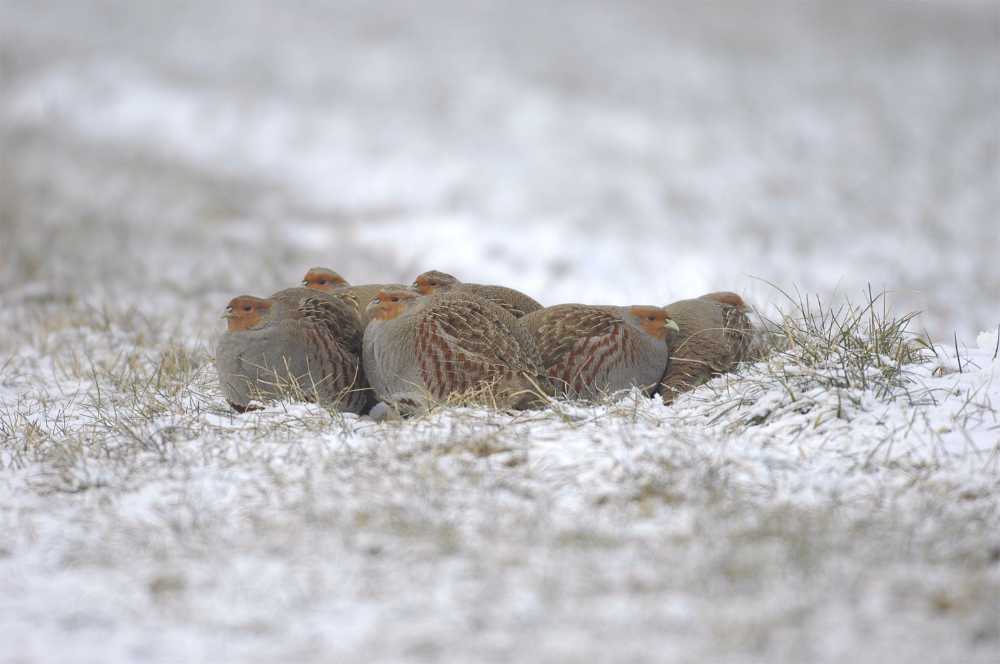
Crow, Fox, Boar and Buzzard (shutterstock.com)
The Grey Partridge is vulnerable to predators at all stages of its life cycle. During the breeding season, unattended eggs can be taken by corvids, rats, hedgehogs, small mustelids, cats and wild boar. The eggs and incubating female are also at risk from larger predators such as foxes and badgers. After they hatch, the chicks may fall prey to the same suite of predators. Fledged young and adult birds can be taken mainly by foxes, mustelids, hawks, harriers and buzzards.
Over 50% of grey partridge nests can be lost to predators, although the percentage is around 15% where predator densities are low. Annually, full-grown birds suffer losses (excluding hunting) of 45-65%, most of them due to predation. The importance of predation as a factor regulating grey partridge abundance was demonstrated experimentally at a landscape-scale in England. The treatment was the legal removal of common predators. Over three years, post-breeding partridge density was 3.5 times higher, and spring breeding density 2.5 times higher, where predators were removed than where they were not. In France, a large-scale ecological study found that grey partridge spring densities and population growth rates were negatively correlated with harrier abundance. In Poland, a 14-year study attributed a decrease in nesting success and adult survival mainly to the increased abundance of nest and incubating female predators, particularly foxes.
Avoiding Predation

A partridge covey easily visible in snow (© Markus Jenny)
For protection against predators, the Grey Partridge relies on its cryptic plumage, vigilance (enhanced outside the breeding season by living in family groups or “coveys”) and availability of vegetation as cover in which to hide. The latter can be a particular problem in modern agricultural landscapes, especially after harvest, when very little cover may remain, and in snow. A fundamental requirement of Grey Partridge management is therefore to ensure that sufficient cover is available throughout the year. The cover must be sufficiently open for partridges to gain access and move around easily, yet provide protection from ground and aerial predators. It can consist of rank vegetation along hedges, permanent vegetated strips, deliberately sown cover (such as kale), or overwintered stubbles. It should be situated away from trees or woodland that could attract predators and close to partridge feeding areas.
Managing Predators
If predator densities are low, sighting them may remain a pleasure for everyone, without the likelihood of much impact on partridges (unless in the early stage of restoration, when every loss is significant). If predator numbers are moderate, their significance will depend on the restoration objectives. If the objective is to see partridges occasionally, or to take a small number for falconry (in which a successful day’s hunting could involve just one capture), then it may not be important if much of an annual post-breeding surplus is feeding predators. However, if having enough for shooting is the main motivation for habitat maintenance and winter feeding, then even a moderate level of predation may be problematic. If predator densities are high, habitat management alone may be insufficient for any partridges to remain, and the removal of common predators becomes necessary.
The predators which may be managed, and the permitted methods, vary from country to country across Europe. Work to remove individual predators is a major commitment in time, and hence money if employment is concerned. The social aspects of predator management, the employment, and the management benefit to other species, may also vary from country to country.
On the web
Your national Perdix site will give information on managing predation to minimise impacts on Grey Partridges